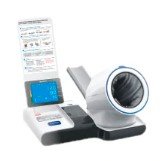The Impact of Biotechnology Innovations on Phlebotomy Training and Skills
Summary
- Biotechnology innovations have revolutionized the field of medical laboratory testing, leading to increased demand for phlebotomists with specialized skills.
- Advancements in technology have necessitated phlebotomists to undergo more comprehensive training to be proficient in handling new equipment and procedures.
- The evolving role of phlebotomists in the era of biotechnology requires them to stay updated with the latest trends and be adaptable to changes in the healthcare industry.
Introduction
Biotechnology innovations have brought about significant changes in the way medical laboratory testing is conducted, leading to a greater demand for skilled professionals in the field of phlebotomy. As the healthcare industry continues to evolve, phlebotomists in the United States are required to undergo specialized training to keep up with the latest advancements in technology and procedures. In this article, we will explore how biotechnology innovations impact the training and skill requirements for phlebotomists in the United States.
The Impact of Biotechnology Innovations
Advancements in biotechnology have transformed the field of medical laboratory testing, allowing for more accurate and efficient analysis of patient samples. These innovations have led to the development of automated testing equipment, such as analyzers and molecular diagnostics, which require specialized training to operate effectively. Phlebotomists play a crucial role in the collection of blood samples for testing, and they must be well-versed in the use of these new technologies to ensure accurate results.
Specialized Skills and Training
Phlebotomy training programs now include education on the latest biotechnology innovations, ensuring that phlebotomists are equipped with the skills needed to handle advanced equipment and procedures. In addition to traditional Venipuncture techniques, phlebotomists must also be proficient in techniques such as capillary puncture and arterial puncture, which may be required for specific tests.
- Knowledge of different types of blood collection tubes and additives.
- Understanding of the proper handling and storage of blood samples for accurate Test Results.
- Training in infection control practices to prevent the spread of diseases in the healthcare setting.
Adaptability and Continuous Learning
Phlebotomists must be adaptable to changes in the healthcare industry, including new Regulations and guidelines for laboratory testing. They must stay updated on the latest trends in biotechnology and be willing to undergo additional training to enhance their skills. Continuing Education programs and certifications are available to phlebotomists to ensure that they remain competent and qualified in their field.
Conclusion
In conclusion, biotechnology innovations have had a profound impact on the training and skill requirements for phlebotomists in the United States. As technology continues to advance, phlebotomists must stay updated on the latest trends and undergo specialized training to ensure that they are proficient in handling new equipment and procedures. The evolving role of phlebotomists in the era of biotechnology requires them to be adaptable and flexible, as they play a crucial role in the accurate and efficient collection of blood samples for medical testing.

Disclaimer: The content provided on this blog is for informational purposes only, reflecting the personal opinions and insights of the author(s) on the topics. The information provided should not be used for diagnosing or treating a health problem or disease, and those seeking personal medical advice should consult with a licensed physician. Always seek the advice of your doctor or other qualified health provider regarding a medical condition. Never disregard professional medical advice or delay in seeking it because of something you have read on this website. If you think you may have a medical emergency, call 911 or go to the nearest emergency room immediately. No physician-patient relationship is created by this web site or its use. No contributors to this web site make any representations, express or implied, with respect to the information provided herein or to its use. While we strive to share accurate and up-to-date information, we cannot guarantee the completeness, reliability, or accuracy of the content. The blog may also include links to external websites and resources for the convenience of our readers. Please note that linking to other sites does not imply endorsement of their content, practices, or services by us. Readers should use their discretion and judgment while exploring any external links and resources mentioned on this blog.
